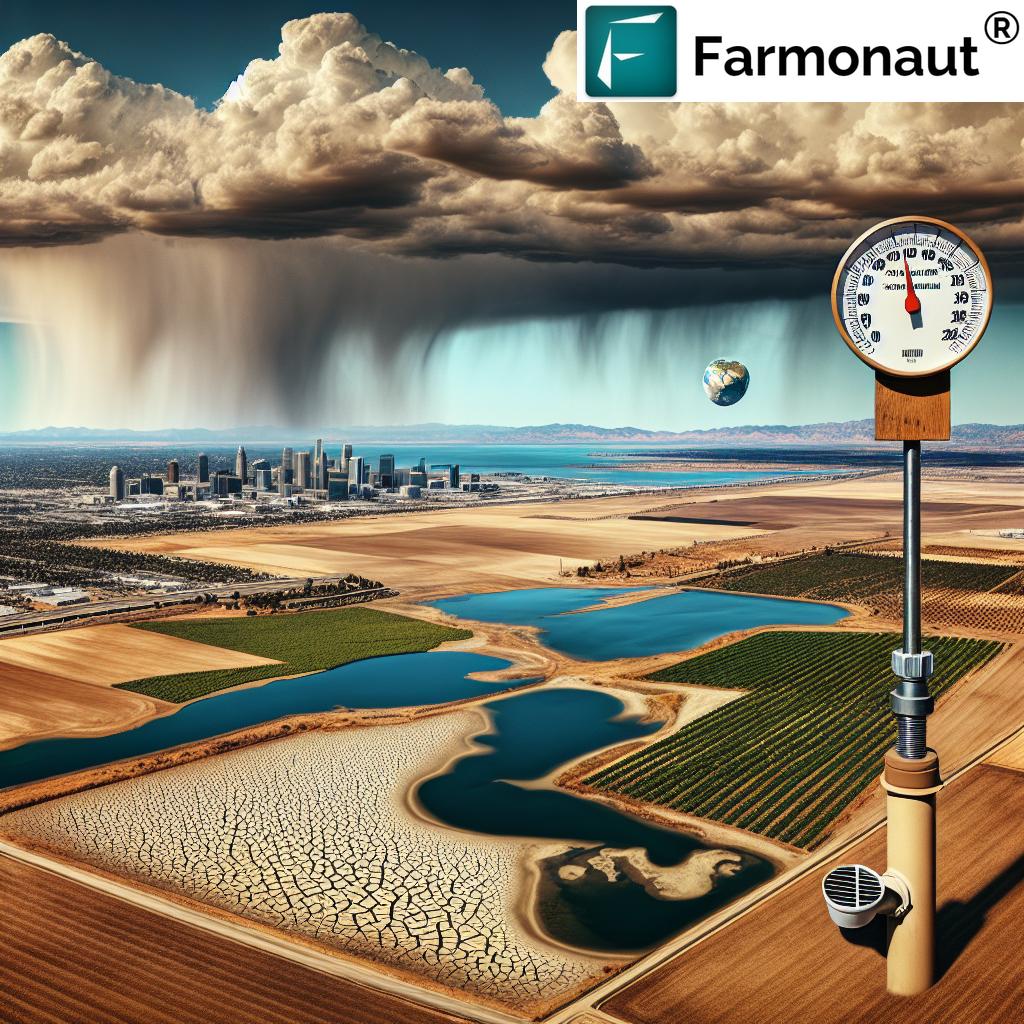Table of Contents
- Introduction: The Future of Turfgrass Health in Kentucky
- Trivia: Turfgrass Management in Kentucky
- Turfgrass Health 2025: 7 Expert Steps for Kentucky Soil
- Step 1: Soil Testing & Assessment
- Step 2: Precision Nutrient Management
- Step 3: Smart Irrigation Scheduling
- Step 4: Weed Identification & Control
- Trivia: 7-Step Guide Benefits
- Step 5: Proactive Pest Monitoring & Management
- Step 6: Disease Prevention Strategies
- Step 7: Seasonal Lawn Maintenance
- Farmonaut Satellite & AI Technology: The Turfgrass Advantage
- Frequently Asked Questions (FAQ)
- Conclusion: Kentucky Turfgrass Health 2025 & Beyond
Turfgrass Health 2025: 7 Expert Steps for Kentucky Soil
Meta description: Unlock healthy Kentucky turfgrass in 2025—learn the 7 expert steps for soil, nutrient, and irrigation management to boost yield, prevent weeds, and control pests for thriving lawns. (Focus Keywords: turfgrass, Kentucky, soil, expert steps, yield, management, irrigation, pests, weeds)
Focus Keyword: Turfgrass Health 2025: 7 Expert Steps for Kentucky Soil.
Location: Jessamine County, Kentucky, United States.
Introduction: The Future of Turfgrass Health in Kentucky
Kentucky’s lush, resilient lawns and athletic fields are more than a symbol of regional pride—they’re built on rigorous soil management, smart irrigation, and science-backed nutrient strategies. With technology advancing and University Cooperative Extension Service research ever-evolving, our turfgrass management practices must also progress. Sustainable, high-yield lawns require understanding current soil composition, tailoring fertilizer applications (with chemical and organic sources like compost), adapting to local climate, and being proactive with weed, pest (white grubs, armyworms), and disease (brown patch, dollar spot) control.
This comprehensive guide breaks down the 7 expert steps proven to deliver healthy, high-performing turfgrass in Kentucky in 2025 and beyond. We integrate local data, 2023–2022 extension service publications, and technology-driven insights relevant for Jessamine County and the entire region.
Turfgrass Health 2025: 7 Expert Steps for Kentucky Soil – Action Plan Table
Below is an actionable summary of the seven core expert steps for Kentuckian lawns, with cost, frequency, and yield breakdowns. Use the table for an at-a-glance plan, then dive deeper into each step in the following sections!
| Step | Recommended Action | Estimated Frequency | Estimated Cost ($/acre) | Expected Yield Boost (%) | Notes/Expert Tips |
|---|---|---|---|---|---|
| 1. Soil Testing | Test pH, salinity, organic matter, and key nutrients (N, P, K, S, Zn); adjust fertilization & liming accordingly. | At least once/year (ideally Spring & Fall) |
$15–$40 | 5–10 | Use University Cooperative Extension Service lab for accuracy. Repeat after major amendments. |
| 2. Nutrient Management | Apply N, P, K, S, Zn as per current soil composition, using both chemical (urea, sulfate, diammonium phosphate) and organic (compost, bone meal, greensand) sources. | 2–4 times/season | $80–$180 | 10–20 | Split doses for improved uptake. Calibrate rates based on growth stage & weather. |
| 3. Irrigation Scheduling | Use sprinkler system; water 4–8 mm/application. Adjust based on NDWI, evapotranspiration, season, and weather. | 1–3 times/week, April–October |
$25–$60 | 5–8 | Early morning watering minimizes disease risk. Monitor NDWI for real-time moisture status. |
| 4. Weed Control | Scout for dominant weeds (crabgrass, dandelion, plantain, clover). Use pre/post-emergent herbicides or organic methods like corn gluten meal and hand-pulling. | Every 2–4 weeks, May–October |
$40–$80 | 8–12 | Thick turf canopy is the best defense. Alternate chemical and organic controls to minimize resistance. |
| 5. Pest Monitoring | Monitor for white grubs, armyworms, sod webworms, chinch bugs. Apply targeted chemical (chlorantraniliprole, imidacloprid) or organic solutions (Bt, nematodes) based on probability and detected risk. | Monthly checks, April–October |
$35–$85 | 5–10 | Increase frequency if pest population or risk is high. Combined schedule with weed/disease checks. |
| 6. Disease Prevention | Scout for brown patch, dollar spot, red thread, etc. Apply azoxystrobin or propiconazole (chemical), improve drainage or apply compost tea (organic) if needed. Adjust mowing and irrigation to reduce conditions for disease. | Every 3–6 weeks, May–September |
$30–$100 | 8–12 | Disease pressure rises with excess moisture or high nitrogen; balance irrigation & nutrients. |
| 7. Seasonal Maintenance | Aerate, dethatch, overseed, and apply compost to improve soil organic carbon. Adjust mower height with season for optimal health. | Spring & Fall | $50–$120 | 10–15 | Aeration and compost addition boost water retention and root growth; perform before seeding or fertilizing. |
Step 1: Soil Testing & Assessment in Kentucky Turfgrass
Why Soil Testing is Foundational
Effective turfgrass management begins with understanding your current soil composition. Testing for pH, salinity, nutrients (N, P, K, S, Zn), and soil organic carbon (SOC) reveals hidden growth barriers and highlights the need for specific fertilizer applications. The University of Kentucky Cooperative Extension Service (official turf publications) recommend such tests at least annually, ensuring results are local, current, and actionable.
- Sourcing and Sample Collection: Collect samples from different spots in your lawn, targeting root zone depth (0-6 inches). Mix and send to the local extension service or trusted labs. Always label location (e.g., Jessamine County).
- What the Test Shows: pH range, nutrient (N, P, K, S, Zn) levels in ppm or kg/acre, organic matter %, and salinity risk. Local recommendation: Maintain pH 6.0–7.0 and SOC >2% for ideal turfgrass.
- Timing: Best in early spring or late fall—before major fertilizer or compost additions.
Regular soil analysis is critical to tailor fertilizer and irrigation management. Recent data (2023, 2022, 2021) show low nutrient levels and SOC in many Kentucky lawns, underscoring the importance of testing.
For advanced monitoring, using satellite imagery via Farmonaut’s platform can complement soil test findings by visually assessing canopy vigor, indicating uniformity or hidden stress patches.
Pro Tip: For precision, refer to the published University Extension Service guides and select regional labs. If you use Farmonaut’s solutions, our satellite-based analytics support broad-area monitoring to optimize sampling spots and improve decision-making.
Step 2: Precision Nutrient Management – Getting N, P, K, S, and Zn Right
A balanced nutrient plan is a must for healthy turfgrass, especially in Kentucky’s temperate climate. Managing nitrogen (N), phosphorus (P), potassium (K), sulfur (S), and zinc (Zn) boosts growth, enhances disease resistance, and improves yield. The University Cooperative Extension Service and Ohio State University Extension (see 2021–2023 publications) offer ideal recommendations based on extensive field data.
- Nitrogen (N): Use urea, ammonium sulfate (chemical) or compost, blood meal (organic). Typical rates: 1–2 lb/1000 sq ft per application, split over 2–4 feedings across the growing season.
- Phosphorus (P): Use triple superphosphate or diammonium phosphate (chemical), bone meal (organic). Apply only if soil test shows below-ideal levels (typically 20–40 ppm).
- Potassium (K): Use potassium chloride, potassium sulfate (chemical) and greensand, wood ash (organic). Application triggers: low or declining K in test—critical for stress tolerance and winter hardiness.
- Sulfur (S) & Zinc (Zn): Apply as gypsum, ammonium sulfate, zinc sulfate or with high-quality compost if tests are below critical levels.
- Split Dose Applications: Smaller, more frequent applications (every 3–6 weeks) provide steady nutrition and reduce leaching.
Management Tip: Calculate nutrient gap as ideal minus actual (soil test in kg/acre or ppm) and supply via chemical or organic sources. Monitor criticality (high, moderate, low) for each—future applications may need to change as data evolves.
For up-to-date regional, rate, and application timing, always use the Kentucky cooperative extension turfgrass guides—publication ID varies annually (2023, 2022).
Farmonaut’s satellite-based NDVI analytics and Jeevn AI tools (see next video) help identify uneven growth—this may signal underlying nutrient deficiency even if soil test points are within the recommended range.
Step 3: Smart Irrigation Scheduling – Meeting Moisture Needs
In Kentucky, irrigation is a top priority due to long, often dry growing seasons (April–October). Sprinkler systems are most common and effective, per extension recommendation (University of Kentucky, 2021, 2022). The best approach factors in soil moisture (NDWI), daily evapotranspiration (ET), local rainfall, and the phenological stage (growth phase) of the grass.
- Typical Recommendations: 4–8 mm/application (about 0.16–0.32 inches), 1–3 times/week. Use early mornings (6–8 AM) to minimize water loss and disease risk.
- Scheduling: During active growth or dry periods, irrigate every 2–3 days. In harvest or post-harvest stages (late September/October), cut frequency.
- Farmonaut Carbon Footprinting Tools: For advanced users, our carbon and water monitoring helps optimize water usage and track sustainability. Efficient irrigation not only boosts turf health and yield but also reduces your environmental impact.
- Monitor NDWI: High-frequency satellite NDWI (Normalized Difference Water Index) reveals soil/plant moisture patterns at field-scale, crucial for adapting schedules during periods of drought or excess rain.
Do not overwater! Excess moisture, especially in high temperatures, can increase the risk of disease (brown patch, dollar spot).
Pro Tip: Use Farmonaut’s Satellite Weather API for automated irrigation triggers, integrating NDVI, NDWI, and custom weather data into your smart sprinkler system.
Full API Developer Documentation here
Step 4: Weed Identification & Control – From Crabgrass to Clover
Vigorous, healthy turfgrass naturally defends against common Kentucky weeds (crabgrass, dandelion, plantain, clover). However, gaps or stress from drought, mowing errors, or nutrient deficiency allow these invaders to thrive. The University/Extension Service (see AGR-207, 2021–2023) advises a blend of chemical and organic tactics:
- Key Weeds (2025): Crabgrass (high probability, managed with quinclorac herbicide or corn gluten meal), Broadleaf Plantain (2,4-D or hand pull), dandelion, clover.
-
Chemical & Organic Controls:
- Pre-emergent herbicides (early spring) prevent annual weeds like crabgrass.
- Post-emergent herbicides (2,4-D, broadleaf mixes) control actively growing broadleaves.
- Organic Methods: Manual pulling, corn gluten meal (targets annual weed seeds), and regular overseeding to thicken turf canopy.
- Timing: Best weed control is achieved with frequent (every 3–4 week) scouting from May through October, especially after stress events.
Monitor NDVI satellite maps for patches with abnormally high readings late in the season. Persistent green after normal senescence suggests active weed biomass, not turf regrowth. Incorporate this step into weekly maintenance schedules.
Expert Note: A thick, well-fed lawn (full nutrient, compost-rich, ideal pH) is the best defense against all weeds. Target underperforming spots early—timely interventions are more effective!
Interested in advanced compliance or authenticating your Kentucky turf supply chain?
Farmonaut’s Blockchain Traceability unlocks transparent supply tracking from planting through harvest, perfect for professional turfgrass growers, sod farms, and service providers. Strengthen your commercial reputation with transparent, secure records.
Planning financing for lawn expansion or landscaping? Farmonaut’s Satellite-Based Crop Loan & Insurance Platform supports verification, risk assessment, and documentation—empowering you with accurate, remote proof of condition for lenders and insurers.
Step 5: Proactive Pest Monitoring & Management – Outsmarting White Grubs & Armyworms
Kentucky lawns face a range of pests, with white grubs and armyworms ranking as the most persistent threats. Left unchecked, these pests can devastate turf, especially in low-nutrient or moisture-stressed lawns.
- Key Pests: White grubs (June beetle larvae), armyworms, sod webworms, chinch bugs. Predicted probability based on local advisory data is high for these in late season, especially September/October.
- Chemical Solutions: Chlorantraniliprole, Imidacloprid granules (for white grubs); Pyrethroid spray (for armyworms). Apply when monitoring or historical advisories report high probability.
- Organic Solutions: Beneficial nematodes (for grubs), Bacillus thuringiensis (Bt, for caterpillar pests).
- Timing & Application: Early identification is critical. Monitor soil and turf weekly, especially following high rainfall or excessive irrigation.
Farmonaut’s Jeevn AI system can interpret NDVI/NDWI data to signal potential pest hotspots, where NDVI unexpectedly drops due to insect root feeding or foliage destruction. Pair this technology with ground truthing for effective, targeted responses.
Stay ahead—combine pest checks with weed and disease scouting as part of your full maintenance program.
Managing multiple turf sites or a landscape fleet?
Take control with Farmonaut’s Fleet Management tools. Efficiently track vehicles and machinery used for application, irrigation, or mowing, cut costs, and boost operational safety.
Step 6: Disease Prevention Strategies – Tackling Brown Patch, Dollar Spot, and More
Fungal pathogens are a constant risk in Kentucky’s humid, moderate climate. Brown patch (caused by Rhizoctonia) and dollar spot are the most common. University Extension Service guides (2023, 2022) highlight prevention as the most effective application:
- Brown Patch: Emerges late spring through early fall in high humidity and night temperatures above 65°F. Watch for circular patches of brown, thinning grass.
- Dollar Spot: Small, silver-dollar-sized brown patches (high probability May–September).
-
Prevention:
- Do not overfertilize N in summer—encourages soft, susceptible growth.
- Use proper irrigation (early morning only).
- Limit leaf wetness; mow at higher setting (canopy) for resilience.
- Maintain soil pH and organic matter—low carbon increases risk.
- Chemical: Azoxystrobin, propiconazole—best as rotation to reduce resistance.
- Organic: Compost tea, increased drainage, and proper fertilization highly recommended for low-moderate risk situations.
- NDVI Patterns: Persistent or expanding low NDVI zones, especially with adequate moisture, can indicate developing disease. Weekly satellite monitoring delivers early warning.
Combine disease checks with seasonal maintenance for maximum coverage. If an outbreak occurs, rotate fungicides and sharpen mowing blades to reduce stress.
Bonus Resource: To understand how healthy soil combats disease and climate challenges, see Farmonaut’s Unlocking Soil Secrets: How Organic Matter and Carbon Combat Climate Change ?.
Affordable Satellite & AI Subscriptions for Turfgrass Professionals
Step 7: Seasonal Lawn Maintenance – Aeration, Overseeding, Compost, and More
Comprehensive, seasonally timed maintenance completes the expert 7-step program. This builds soil health, improves resilience, and ensures long-term yield and appearance. According to Kentucky extension publication (see 2021–2023 guides), best results occur when following this schedule:
- Aeration: Core-aerate in early fall (late September/October) to relieve compaction, improve water/nutrient penetration, and encourage deep rooting.
- Dethatching: Annually or as needed (if thatch >0.5 inch). This reduces disease risk and supports healthy, active crowns.
- Overseeding or Interseeding: For thin or patchy lawns, overseed after aeration to achieve dense, weed-resistant canopy.
- Compost Addition: Light topdressing with high-quality compost boosts SOC, improves nutrient cycling and moisture retention.
- Mowing Adjustments: Set mower higher in summer (3–4 inches) to shade roots, but lower in early spring for faster green-up.
All these steps are optimal when applied in sync with turfgrass phenological stages and local growing periods—April through October in most of Kentucky, including Jessamine County.
Managing extensive commercial lawns, golf courses, or municipality grounds in Kentucky?
Discover Farmonaut’s Large Scale Farm Management Platform—offering satellite-based insights, multi-field monitoring, and data-driven advisory tools for the most efficient and precise turfgrass management experience in the state.
Farmonaut Satellite & AI Technology: The Turfgrass Advantage
Advancements in satellite monitoring and AI-powered insights have revolutionized how we manage Kentucky lawns. With Farmonaut, users gain access to real-time NDVI vegetation maps, NDWI soil moisture analytics, custom crop health advisories, resource tracking, and blockchain-powered traceability—all via app, web, and robust APIs.
- Satellite Imagery: Detect uneven growth, weed encroachment, drought, or over-application of fertilizers at any scale. Key for lawns, sports fields, golf courses, and sod producers.
- Jeevn AI Advisory System: Real-time insights based on satellite data for nutrient application, irrigation, pest/disease intervention, and more.
- Blockchain for Traceability: Assurance of authenticity for turf products—reduces risk, increases transparency.
- Fleet & Resource Management: Efficiently track assets, machinery, and vehicles in lawn care businesses.
- Environmental Impact Monitoring: Track your carbon and water footprint for sustainable turf management.
Start with the Farmonaut App (download links above) for immediate access. For enterprise-scale needs, leverage our API and tailored subscription plans (see above Stripe integration).
Farmonaut stands as a technology solution provider—not a marketplace, manufacturer, or regulatory entity—and our mission is to empower all Kentucky turfgrass stakeholders with cost-effective, actionable satellite-driven data.
Frequently Asked Questions (FAQ) – Kentuckian Turfgrass Management 2025
-
What is the ideal soil pH for Kentucky turfgrass?
Lawn and athletic turf thrive at pH 6.0–7.0. Test yearly and lime or acidify as needed. -
How often should I irrigate my lawn during the growing season?
Typically, 1–3 times per week with 4–8 mm/application. Adjust based on local rainfall, NDWI, and visual cues. -
Which nutrients are most likely to be deficient in Kentucky?
Nitrogen (N) is nearly always required. Phosphorus (P), potassium (K), and sulfur (S) can be limiting based on soil type, cropping history, and weather. Use soil test data to guide all inputs. -
What are the most common turfgrass diseases and pests?
Brown patch and dollar spot (fungi); white grubs and armyworms (insects). All require proactive scouting and integrated management. -
Can I rely on organic fertilizers for high-yield turf?
Yes, but integrate with chemical fertilizers as necessary—especially for rapid greening (N, P). Compost, bone meal, greensand, and blood meal contribute to soil structure and long-term health. -
What is the best defense against weeds?
Healthy, dense turf (proper nutrient and moisture) is the best preventive step, paired with timely chemical or organic weed control based on scouting. -
How do I monitor large lawns efficiently?
Leverage Farmonaut’s Large Scale Turf Management platform and Jeevn AI for satellite-based monitoring, scheduling, and advisories across vast areas. -
Where can I find more technical or regional advice?
Start with the University of Kentucky Cooperative Extension Turf Publications or consult with your local County Extension Office. Supplement regional expertise with detailed, up-to-date analytics from Farmonaut.
Conclusion: Kentucky Turfgrass Health 2025 & Beyond
Mastering turfgrass management in Kentucky for 2025 and beyond hinges on expertly implementing these 7 expert steps—from soil testing to nutrient management, smart irrigation, weed and pest control, disease prevention, and seasonal maintenance. Ground your approach in current research, local data (including real-time satellite NDVI, NDWI), and extension service recommendations. Whether you’re a homeowner, a landscape professional, or a facility manager in Jessamine County or elsewhere in Kentucky, these principles apply directly to United States’ temperate turf regions.
Embrace technology for efficiency—particularly satellite-driven insights and AI-powered advisories via Farmonaut—to move from reactive to proactive management. Stay on top of trends in nutrient application, irrigation, cropping calendars, and pest/disease risk for sustainable, high-yield, and beautiful lawns in every season.
For the most up-to-date, site-specific, and scalable turf management solutions, explore Farmonaut’s suite of web, mobile, and API tools, designed for all operations—big or small. Healthy turf starts with smart, regionally optimized decisions!














